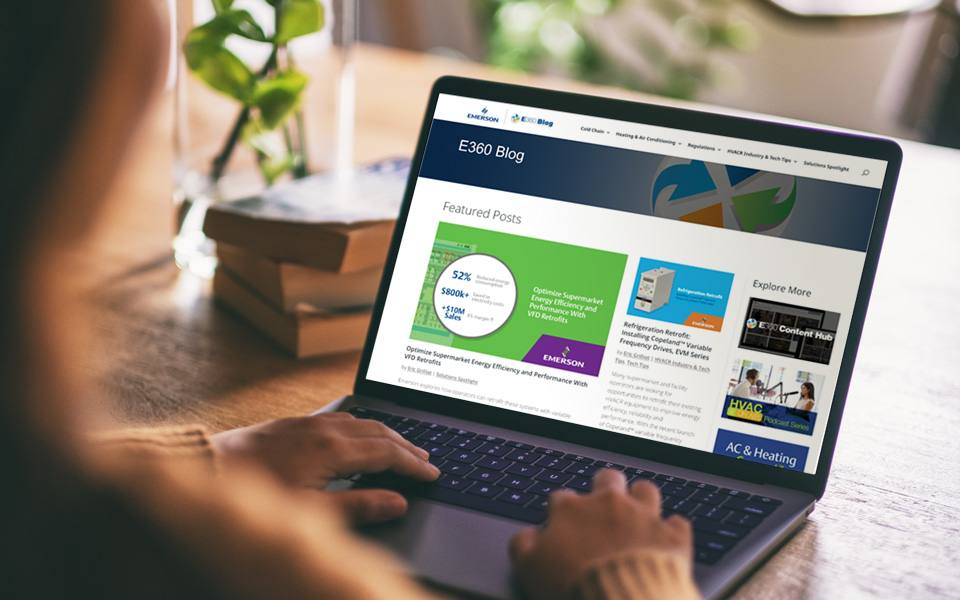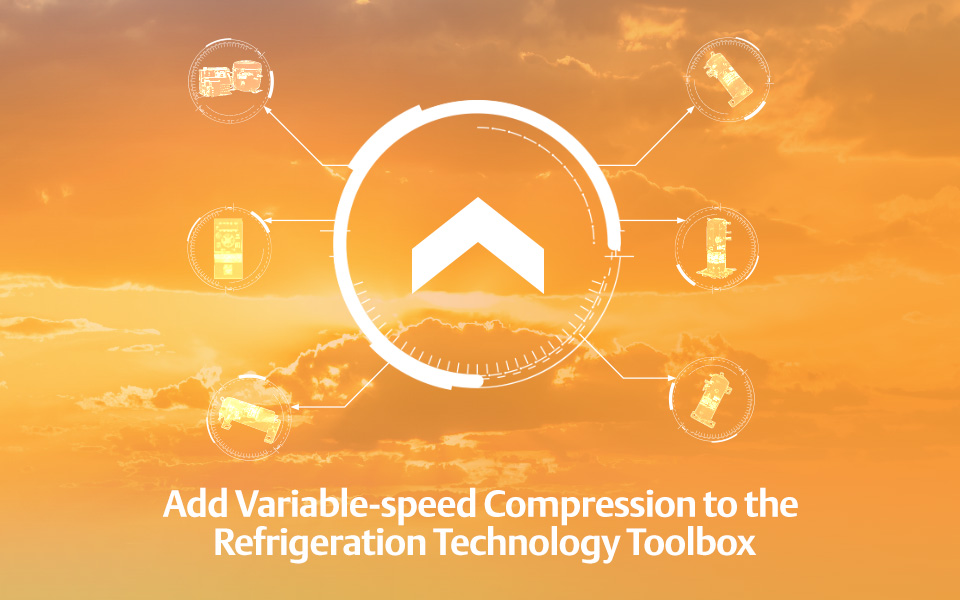Achieving Capacity Modulation With Digital Retrofits

VIEW our latest E360 Webinar on demand, “Utilizing Digital Retrofits to Achieve Capacity Modulation.”

The integration of a digital compressor into an existing rack to achieve capacity (or load) modulation is a technique often referred to as a digital retrofit. In our most recent E360 webinar, “Utilizing Digital Retrofits to Achieve Capacity Modulation,” we explained the principles behind digital technology and its potential benefits.
In theory, digital capacity modulation can improve any system with varying load requirements, including: supermarket and foodservice refrigeration; commercial AC; walk-in coolers/freezers; refrigerated warehousing; and process chillers and air dryers. A recent emphasis on deploying systems with lower global warming potential refrigerants is prompting many supermarket retailers to make changes to their existing refrigeration systems — thus presenting digital retrofit opportunities.
Why go digital?
Digital compression technology addresses many of the challenges of traditional refrigeration systems by enabling the benefits of capacity modulation:
-
- Reduced compressor cycling
- Increased contactor life/system reliability
- Enhanced system load match capability
- Tighter suction setpoint range
- Improved energy efficiency
The relationship between suction pressure and energy efficiency is particularly noteworthy. We estimate compressor power consumption is reduced by approximately 2 percent for every 1 PSI increase in suction pressure. When the suction pressure is held tighter, as is the case in digital retrofit systems, the suction setpoint may also be raised. It’s here where significant energy savings from digital capacity modulation can be achieved.
Principles of digital modulation
Both Copeland™ digital scroll and Discus™ digital compressors work according to a similar principle: varying the percentage of time that the compressor is loaded and unloaded to achieve the desired load requirements. For example, if the required capacity is 50% during a 20-second period, the compressor may be fully loaded for 10 seconds and completely unloaded for the remaining 10 seconds.
Regardless of the load/unload state, the speed of the digital compressor speed remains constant. During the unloaded stage of the compression cycle, the flow of suction gas is completely closed off to the cylinders; no gas is compressed and power consumption is significantly lower. A solenoid valve controls the gas flow; when it is deenergized, the suction gas resumes flow into the cylinders and normal compression resumes.
When to make the move to digital
System redesign, refrigerant changes or a compressor replacement are all viable opportunities to install a digital compressor to act as the lead compressor in a rack. In doing so, retailers will not only significantly improve refrigeration system performance, but also potentially prolong the life of the other compressors on the rack. I demonstrated this concept in the webinar with data that showed a clear reduction in compressor cycling — in one case going from 900 starts per day to 12 starts in four days.
To learn more about digital retrofits with capacity modulation, view this webinar in its entirety

Introducing Our New E360 Blog Platform
by John Schneider | Solutions Spotlight
Emerson is pleased to announce the launch of our new E360 Blog, offering readers a more...

Copeland™ Mobile App Wins a Gold Dealer Design Award
by Jeffrey Lichty | Solutions Spotlight
Emerson is thrilled to announce that our Copeland Mobile smartphone app took home the gold at the...

Add Variable-speed Compression to the Refrigeration Technology Toolbox
by Joe Summers | Solutions Spotlight
Among the available options to improve refrigeration efficiency and performance, variable-speed...
The post Achieving Capacity Modulation With Digital Retrofits appeared first on Emerson E360 Blog.